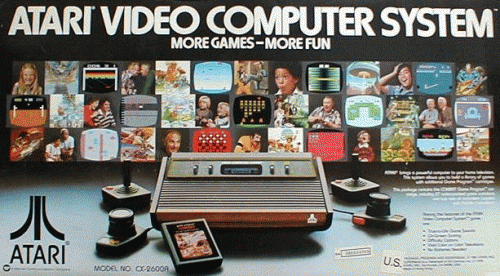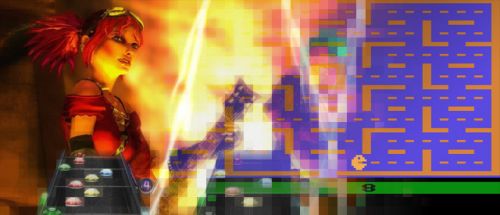In 1982, video games were big business. Really big, to the tune of billions of dollars. Arcade games were thriving with dedicated arcades popping up in every mall across America. It was hard to find a grocery store, a gas station, or bowling alley without at least a handful of quarter munchers on the floor. At home, the Atari VCS was the biggest hit, but the Intellivision, Colecovision, and many other second-generation consoles were also hooked up to the family TV set. Video games were such a large part of popular culture that they made appearances in other media; a video game movie, Tron, was in theaters, and "Pac-Man Fever" hit #9 on Billboard’s Hot 100. It looked as if the sky was the limit for the video game industry in general, and Atari in particular.
But all that changed in 1983. By the end of that year, the death of the video game industry was in the news. Atari alone lost over half a billion dollars, barely surviving at all. Smaller game companies either went bankrupt or sold for a fraction of their previous worth. The causes of the great crash of 1983 were complex, but over-saturation of the market and poor quality game releases were major factors in the outcome.
In the past two years, the once thriving music game industry went through a similar downturn. The Guitar Hero brand, once a major moneymaker for Activision, was discontinued in early 2011. While Rock Band is still releasing new songs regularly, the last major disc release, 2010’s Rock Band 3, was a poor seller, moving roughly 25% of the units of its predecessor. At one point, music games seemed invincible, and yet the genre still crashed, hard. The similarities between the crash of 1983 and the demise of the music game are impossible to ignore.

In the early 80s, this was the best thing you ever got under your tree
One of the biggest causes of the video game crash of 1983 was a congested market. Atari’s VCS was released in 1977, and steadily grew in popularity. A solid array of competing consoles included the Intellivision, with better graphics and sound than Atari’s aging system, and the Colecovision, packing a slick port of arcade smash Donkey Kong. A half dozen or so other, less successful consoles were also on the market and competing for consumer dollars. Never since has the home console landscape been as varied as in 1983.
With so many different consoles available, finding the appropriate software was a bit of an issue. When young Billy put Frogger on his birthday wish list, he might be referring to a cartridge for the Atari 2600, the new Atari 5200, Intellivision, Colecovision, or one of a handful of early home computers. In all likelihood, Billy’s confused grandparents, and many other consumers, might not know which cartridge he wanted. Add in the availability of adapters that let you play Atari cartridges on some of the other systems, and you really have a mess in the electronics department of stores across the country.
